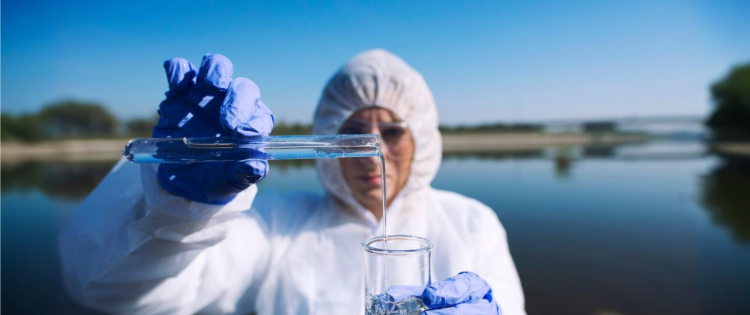We all know the importance of clean drinking water. It's essential for our health, our families, and
our communities. But what if the water flowing from your tap harbours hidden threats, invisible to
the naked eye and undetectable by standard water quality tests?
While most municipal water suppliers do a commendable job of treating our water and meeting
regulatory standards, there's a growing concern about emerging contaminants that may slip through
the cracks. These "hidden" pollutants can pose serious health risks, even in low concentrations.
Water teaches us that the greatest strength comes through gentleness and surrender to the flow of
life.
– Rumi
The Unseen Dangers Lurking in Your Glass:
Let's dive into some of the most concerning hidden contaminants:
PFAS: The "Forever Chemicals"
Per- and polyfluoroalkyl substances (PFAS) are a group of man-made chemicals used in a wide array
of products, from non-stick cookware and firefighting foam to food packaging and cosmetics. Their
strong chemical bonds make them incredibly persistent in the environment, earning them the
nickname "forever chemicals.
- The Problem: PFAS can leach into our water sources from landfills, industrial sites, and even
household products. They've been linked to a range of health problems, including liver damage,
immune deficiency, thyroid disorders, high cholesterol, and even certain cancers.
- The Challenge: Many traditional water treatment methods are not designed to remove PFAS. This
means they can persist in our drinking water, even after it's been treated.
Microplastics: Tiny Particles, Big Concerns
Microplastics are tiny plastic particles, less than 5 millimetres in diameter, that are now found in
virtually every corner of the planet, including our oceans, rivers, and even our drinking water. They
originate from the breakdown of larger plastic debris, synthetic clothing fibres, and microbeads used
in cosmetics.
- The Problem: These particles can absorb harmful pollutants from the surrounding water, acting like
tiny sponges for toxins. When ingested, they may release these pollutants into our bodies. Research
is still ongoing, but there are concerns about their potential to disrupt hormones, cause
inflammation, and contribute to various health problems.
- The Challenge: Microplastics are incredibly small and difficult to remove from water. Standard
filtration methods often fail to capture these tiny particles.
Pharmaceuticals and Personal Care Products: An Unseen Cocktail
Our water systems are increasingly contaminated with traces of pharmaceuticals, like antibiotics and
painkillers, as well as personal care products, such as shampoos, lotions, and fragrances. These
substances enter our water supply through wastewater and can persist even after treatment.
- The Problem: While the concentrations of these substances are typically low, the long-term effects of
chronic exposure are still unknown. There are concerns about potential impacts on human health
and the development of antibiotic-resistant bacteria.
- The Challenge: Detecting and removing these diverse chemicals from water requires advanced
analytical techniques and specialized treatment processes.
Taking Action: Protecting Your Health
So, what can you do to protect yourself and your family from these hidden contaminants?
- Get Informed: Research your local water quality reports and contact your water supplier to
inquire about testing for emerging contaminants like PFAS and microplastics.
- Invest in Advanced Filtration: Detecting and removing these diverse chemicals from water requires advanced
analytical techniques and specialized treatment processes.
- Reduce Plastic Use: Minimize your use of plastic products to reduce the amount of
microplastic pollution entering the environment. Choose reusable alternatives whenever
possible
- Dispose of Medications Properly: Never flush unused medications down the toilet or drain.
Contact your local pharmacy or health department for proper disposal options.
The Future of Clean Water
The presence of hidden contaminants in our drinking water highlights the need for continued
vigilance and innovation in water testing and treatment. As technology advances, we can expect
more sophisticated methods for detecting and removing these pollutants.
The presence of hidden contaminants in our drinking water highlights the need for continued
vigilance and innovation in water testing and treatment. As technology advances, we can expect
more sophisticated methods for detecting and removing these pollutants.
